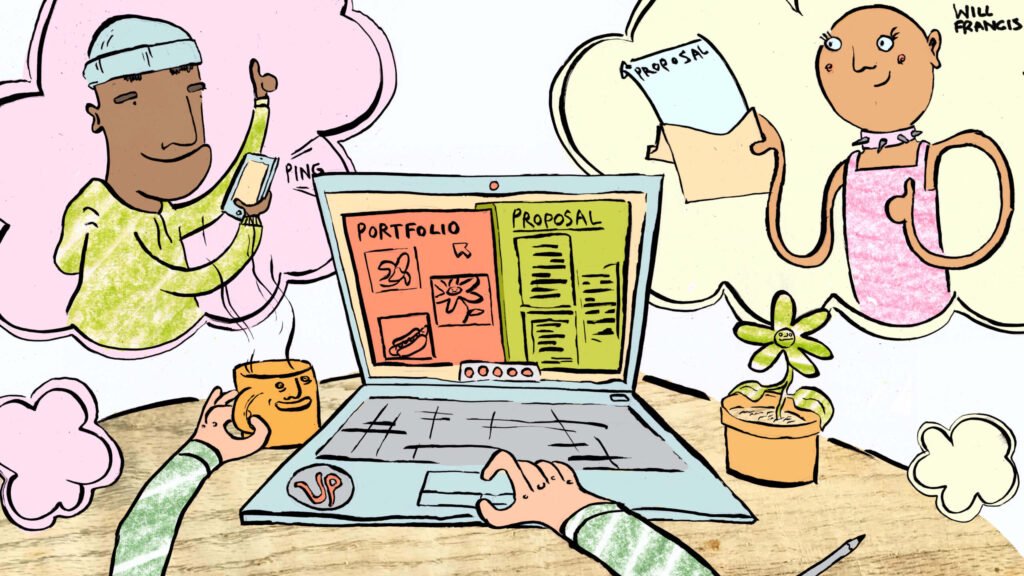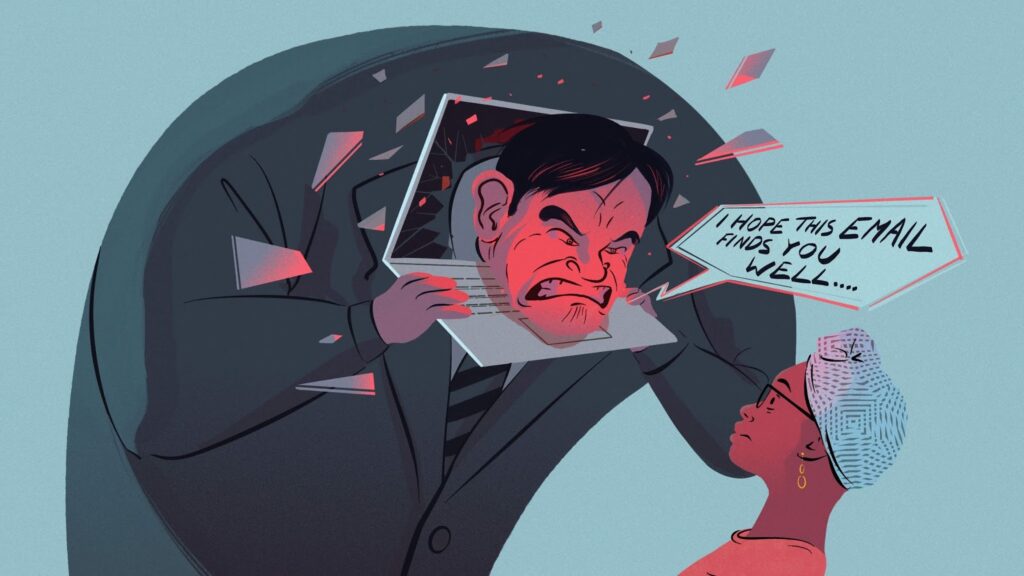So you’ve set up your fancy new website and (hopefully) responded to more requests for proposals than you can count. But there’s still no-one biting and you’re wondering what you’ve done wrong.
First thing’s first. Respond in the way people have asked to be responded to. “I’ll often see opportunities on Facebook groups and if you know someone is already looking for something, you know there’s a bit more of an opportunity there,” says Monisha Bajaj, an operations strategist and content marketing consultant.
“In those cases, I will just send an email introducing myself and responding to them in exactly the way they’ve asked to be responded to. It’s amazing how many times you see people who don’t respond to exactly what they ask!”
For her, the goal of that initial contact is to form a connection. “I’ll either want to chat a little bit more over email to get a clear idea of the scope of the project, if I’m the right fit and if it’s worth pursuing for both of us,” she explains. “Or I want to get them on a call with me. At this point, I’m not doing any hard pitching or selling, I just want to see if we are likely to work together well. That’s really important to me. I have internal criteria of the type of people I know I’ll be most able to help.”
Portfolios: The proof is high on the agenda
This is also the point Bajaj would usually send over a link to her portfolio. Here the key is relevance. “It’s important to highlight in the email what is relevant to this particular client,” she stresses. “If you don’t have something relevant, find a different way like a testimonial. Why waste people’s time if it’s not relevant to them?”
Stephanie Conway, who left her nine to five in May of this year to go freelance as a marketer, always sends over her portfolio with a calendar invite to schedule a call so that prospective clients get an understanding of the work she does and whether or not her rates are in their price range so that no time is wasted.
“I spent a lot of time working on my portfolio in the beginning so that I could have a complete guide to working with me as a freelancer that includes a little about me, the highlights of my marketing career prior to going freelance, some case studies of work that I had done privately over the years as well as my rates,” she says. “It has benefitted me because I’ve been able to tweak and adjust my portfolio as I go along but it has served well as a guide.”
Rachael Dines, director of Shake It Up Creative, which provides design, web, marketing, PR and SEO services, believes a portfolio is particularly critical for freelancers and that it should be available at all times, whether on a website or via a social media profile. “Clients want the lower pricing that a freelancer often has, but they feel there is higher risk for their spend and so ‘proof’ is high on the agenda at enquiry stage,” she says.
How to create a winning proposal
After a detailed call or email exchange, discussing the scope of a potential project, it’s time to send over a proposal. “The proposal is an agreement and outline of the scope of the project that you’re going to work on together,” Bajaj says.
“Often this will need to be passed onto someone higher up in the organisation who’s the decision-maker – who wasn’t on the call with you. So you’ve got to make sure they have all the information they need.”
Over time, she’s developed a proposal structure that can be applied to almost any project. This will start with what the situation is right now and why you’re talking and then move on to objectives – Why does this matter? What is the value to the organisation? What challenges are you facing right now? Then she’ll go into the process of how she’ll solve those challenges, the timeline and the price, before describing next steps and how she’ll get started. A proposal will generally end with a bit about her and some relevant testimonials.
Conway, too, has created a formula to create proposals for clients – in less than two hours. Previously, she would often find herself spending the best part of a day creating a beautiful proposal deck that was unique to each client.
“I found that as a freelancer, this really wasn’t sustainable as I’d find that an entire day creating a proposal might be wasted on someone who turned out not to be able to afford my services or might have decided in the favour of a competing freelancer.”
It begins with an introduction, recapping what the request has been. Then, she briefly outlines the strategies and marketing channels that would need to be utilised to be able to successfully execute the task. The proposal concludes with statistics, goals, and projections to back up why she thinks that the outlined strategy is the best course of action to take, as well as including information taken from her portfolio, such as relevant case studies, a reminder of why she’s the right person to do the job and a quote for the work that needs to be done.
“I try to do this in one to two pages so that all of the information is clear, concise and straight forward enough to keep the client’s attention,” she says.
What not to do
Bajaj’s biggest bugbear when she’s receiving proposals from freelancers either for her consultancy or non-profit is when they confuse pitches and proposals. “People try to throw in other ideas and other options for work. The proposal should not be a surprise,” she says. “It’s to confirm the scope we’ve already discussed.”
Timing is also key, according to Dines. “Sending a proposal during outreach would usually be unacceptable and seen as presumptuous and too salesy,” she says. “Our proposals are sent when the prospective client has requested this, or we have offered it following a conversation about the needs of the client.”
She also expects freelancers to communicate and portray themselves honestly. “Examples that cause irritation for us as an agency are saying there is a whole team of people in a business when in fact this is not the case or stating that certain skills are in place when, in fact, when we ask questions to dig deeper, they are not,” she says.
“If a freelancer contacts us cold and has clearly not looked at what we offer or found our names (which are readily available online) to address us personally and sends an email with mistakes in it, this is also an immediate no for us.
“Due to project margins, we also like to know what a freelancer’s pricing is, early on in a conversation, so if this is hard to obtain from the person, that can be a negative for us too.”
Bajaj agrees that good communication is an absolute must. “If you communicate well in your emails, are clear at expressing your thoughts and have shown a lot of interest and passion, it doesn’t matter so much if you’re not familiar with the proposal process. That’s where the portfolio piece comes in. I hire a lot of designers and if their portfolio is really stellar and they’re a good communicator but they don’t have a strong sales process, that’s OK. I don’t need them for their sales process, I need them for their design skills.”




